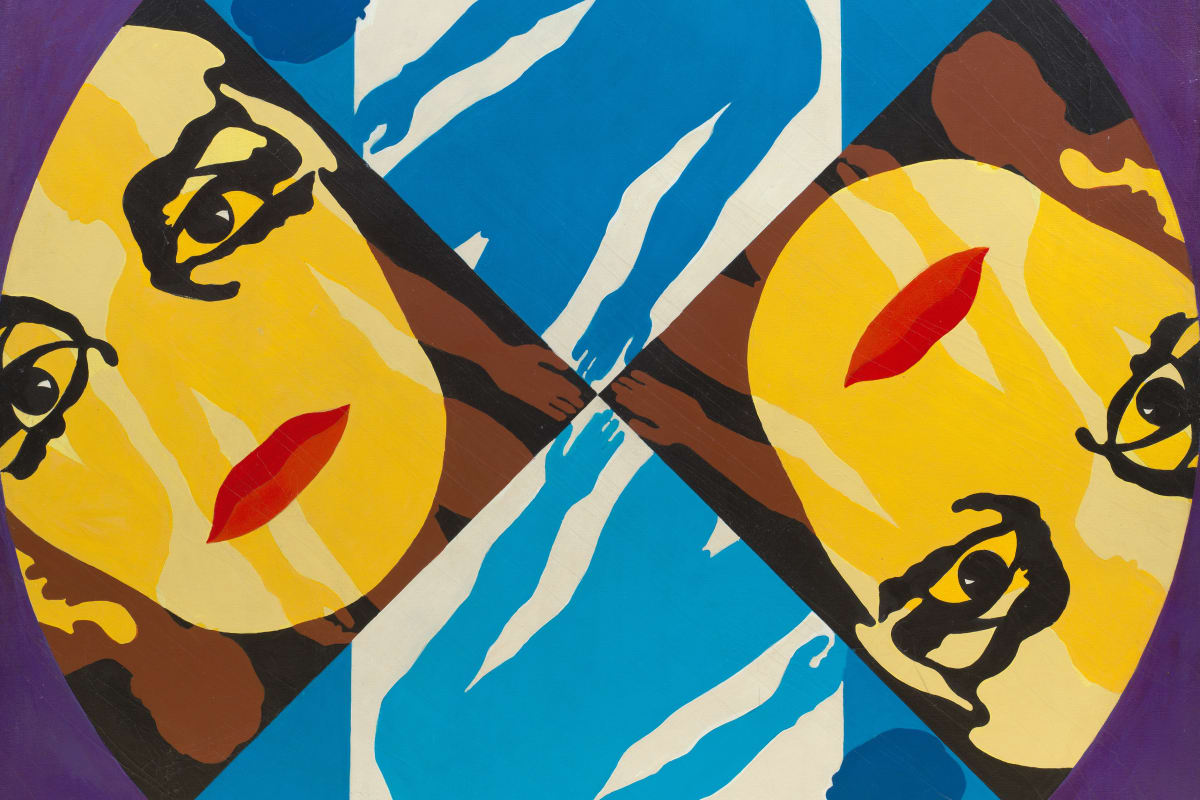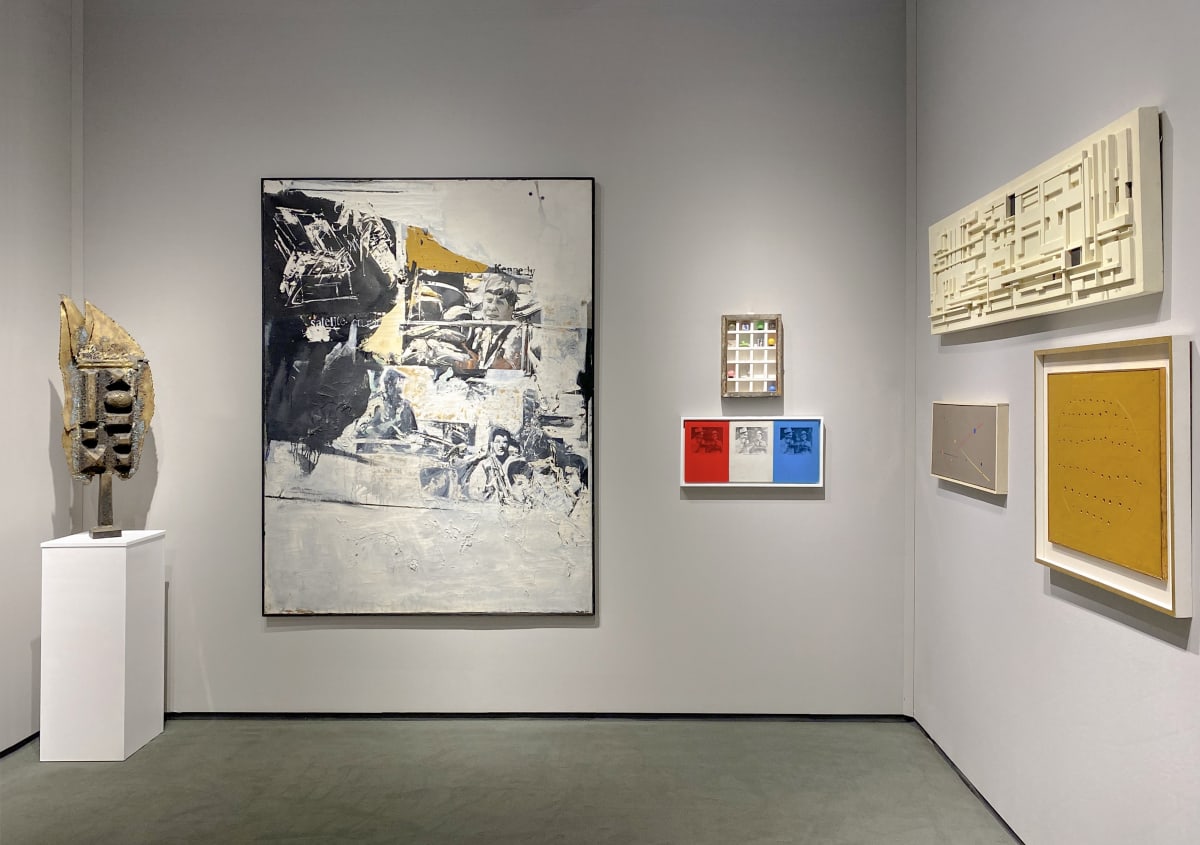Rafael Canogar Spainish, b. 1935
“It’s part of my landscape, the earth ploughed by the worker, who ploughs, leaving his mark on the earth.”
Canogar began his training as a young man with painter Daniel Vázquez Díaz inspired by Georges Braque and Pablo Picasso. In 1954 Canogar began to experiment with abstraction and informalism, looking at the material itself as a form of expression. Canogar applied paint directly on to the canvas then filling the scratches and furrows he made with his hands with liquid paint.
His canvases, increasingly monochromatic, sought to achieve a balance between form and matter, between formal and informal painting. Canogar formed the El Paso group (1957–1960) alongside Manuel Rivera and Antonio Saura among others. Influenced by Action painting the Spanish artists sought an informal aesthetic produced with a sense of passion and urgency which celebrated the freedom of the opening of Franco’s Spain to the international scene.
Following a trip to the USA in the early 1960s Canogar begun a second figurative period. Using a vocabulary of narrative, socio-political mass media imagery such as police brutality and the assassination of JFK, his paintings were visually comparable with Rauschenberg’s iconic photo collage screen-prints but with an added ethical and critical dimension that Canogar describes as ‘Realism’ rather than classic American Pop.
In 1967 his work evolved further; using wood, polyester and fiberglass he broke down the barriers of painting and sculpture pushing into 3 dimensions disturbing the physical space of the viewer.
Retrospectives were held at the National Museum of Fine Arts, Buenos Aires, 2003, the Valencian Institute of Modern Art (IVAM), Valencia, 2013 and Reina Sofía National Museum, Madrid in 2001. More recently his work was included in the
2014 Tate Modern exhibition ‘The World Goes Pop’. Rafael Canogar currently lives and works in Madrid.
-
 Rafael CanogarPisas umbral de la muerte (You Walk the Threshold of Death), 1963Oil on canvas200 x 149 cm
Rafael CanogarPisas umbral de la muerte (You Walk the Threshold of Death), 1963Oil on canvas200 x 149 cm
78 3/4 x 58 5/8 inches -
 Rafael CanogarSerie Negra nº 7, 1960Oil on canvas97 x 130 cm
Rafael CanogarSerie Negra nº 7, 1960Oil on canvas97 x 130 cm
38 1/4 x 51 1/8 inches -
 Rafael CanogarPintura nº 7, 1958Oil and acrylic on canvas200 x 95 cm
Rafael CanogarPintura nº 7, 1958Oil and acrylic on canvas200 x 95 cm
78 3/4 x 37 3/8 inches






